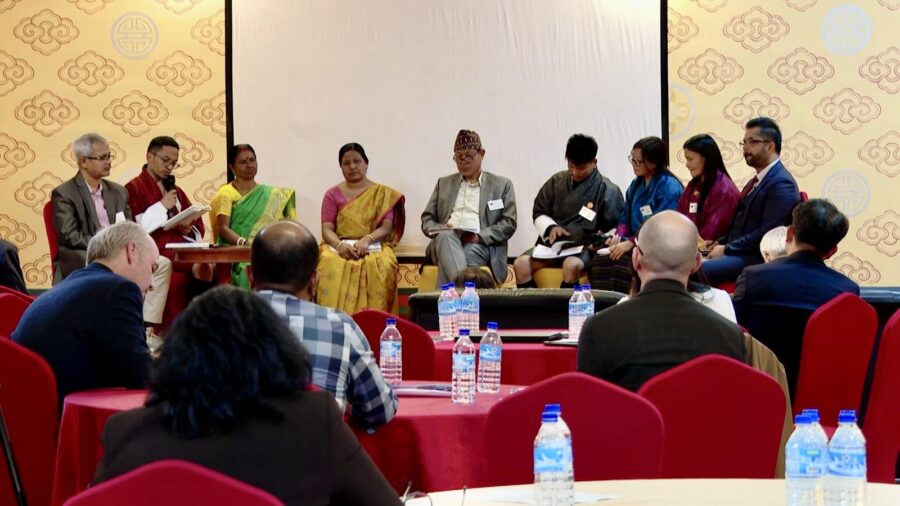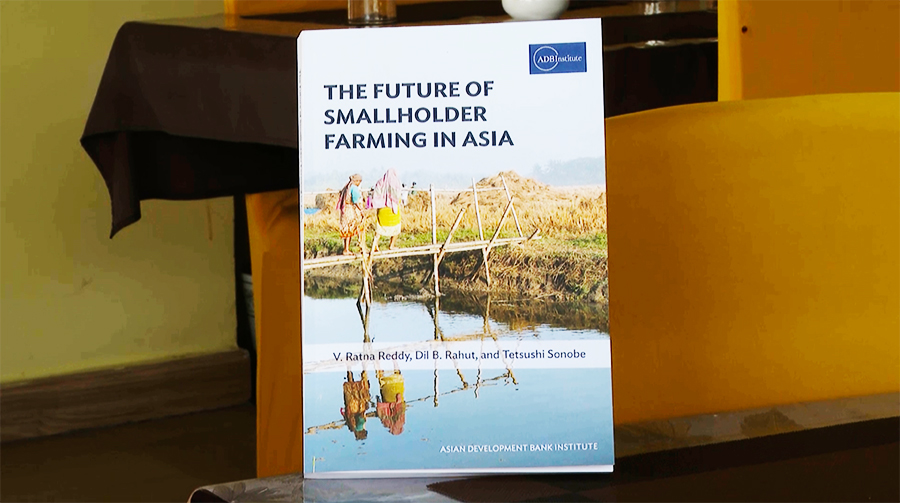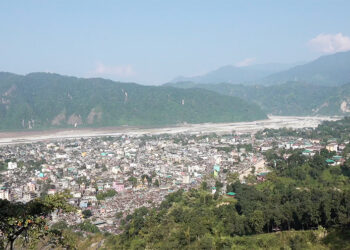 Globally, there are nearly 500 million farm households or farming families, most of which are small and have limited capacity to adapt to climate change. Yet, these households are responsible for producing almost 80 per cent of the food, making them crucial to food systems. In Bhutan, the Climate and Resilient Agriculture for Sustainable Development Conference aimed at placing these farmers at the heart of the conversation, listening to their struggles, and working toward a sustainable future for farming in Asia concluded today.
Globally, there are nearly 500 million farm households or farming families, most of which are small and have limited capacity to adapt to climate change. Yet, these households are responsible for producing almost 80 per cent of the food, making them crucial to food systems. In Bhutan, the Climate and Resilient Agriculture for Sustainable Development Conference aimed at placing these farmers at the heart of the conversation, listening to their struggles, and working toward a sustainable future for farming in Asia concluded today.
Farmers from Nepal, India and Bhutan are in the country to share their experiences about climate change. Climate change has become a growing concern in Bhutan’s agricultural sector as well, with farmers reporting increasingly erratic weather patterns that threaten crop yields and livelihoods.
Across the region, the stories are similar, farmers are dealing with more frequent flash floods, extended dry spells, heavy monsoon rains, and the rise of pests and diseases that further threaten their crops.
“In the past, pests and diseases were not a major issue. However, since 2022, farmers have been struggling with armyworm infestations, drought, and erratic rainfall, making farming increasingly difficult,” said Sonam Gyeltshen, a farmer from Monggar.
“If there isn’t enough rainfall during paddy transplantation, the process is delayed, which affects the harvest timing. Additionally, rainfall during the harvest season leads to yield loss,” said Sangay Tshomo, a farmer from Trashi Yangtse.
“Climate patterns have become highly unpredictable. Previously, rainfall was limited to the monsoon season, but now it occurs year-round. During harvest, untimely rains damage crops, while during rice plantation, droughts leave fields dry, forcing farmers to use pumps for irrigation. Ironically, after extensive pumping, heavy rains often follow, flooding the fields and destroying the crops. Farmers then have to cut drainage holes to release excess water, further impacting yields,” said Jharna Barman Karjee, a farmer from Cooch Behar, India.
“Temperature changes have disrupted crop ripening. For example, maize sown in March was traditionally ready for harvest in September. Now, it ripens 15 to 20 days earlier, around August,” said Kabi Kumar Rai, a farmer from Nepal.
 At the conference, the Asian Development Bank Institute launched a book titled “The Future of Smallholder Farming in Asia”. The book highlights the trends of farming and experiences from five South Asian countries: India, Pakistan, Bangladesh, Sri Lanka, and Bhutan.
At the conference, the Asian Development Bank Institute launched a book titled “The Future of Smallholder Farming in Asia”. The book highlights the trends of farming and experiences from five South Asian countries: India, Pakistan, Bangladesh, Sri Lanka, and Bhutan.
“So, we drew lots of information from secondary data, from government reports, and from several research that have been done on climate-resilient agricultural systems and challenges faced by these farmers. We felt that it is very important to look at their life, their problems, and challenges, and come up with a book that could help policymakers design inclusive policies, and target smallholder farmers,” said Dil Rahut, Vice Chair & Senior Research Fellow, Asian Development Bank Institute, Japan.
One of the key findings is declining investment in the agriculture sector.
“We would be grateful for government support in providing mini-power tillers that are easy for women to operate, as most farmers in our village are women,” said Sangay Tshomo, a farmer from Trashi Yangtse.
“It is crucial for the government to support youth in farming. During the presentation, we learned that around 66,000 acres of land remain fallow, requiring significant government assistance for cultivation. In Bhutan, most farmers are smallholders, and expansion will only be possible with financial support,” said Sonam Gyeltshen, a farmer from Monggar.
The goal is clear, help farmers and provide them with the tools, support, and policies they need to thrive in the face of climate change.
And this four-day conference brought together farmers, policymakers and experts just to do that.
Devika Pradhan & Karma Samten Wangda
Edited by Tandin Phuntsho







